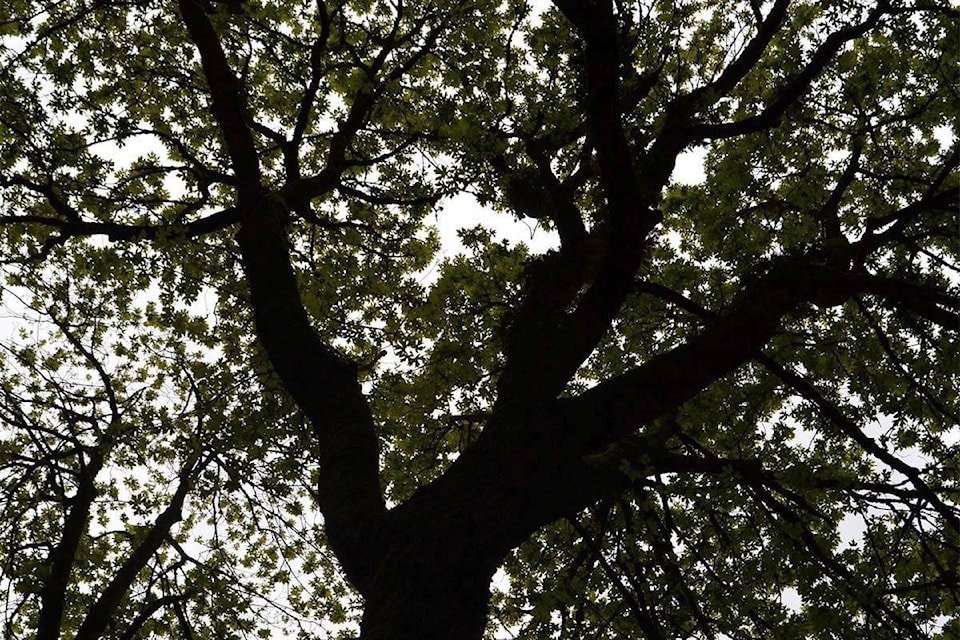Surrey city council has tweaked penalties under the city’s Tree Protection Bylaw, doubling fines to $20,000 from $10,000 per-offence related to chopping down “significant” trees. Still, Deb Jack, an east Newton resident and president of Surrey Environmental Partners, argues that so much more needs to be done to foster a healthy community.
“Why does there not happen to be more developments which are designed around whatever trees are on the property,” she asks. “Not because of any bylaw requirement but because of the understanding that when you’ve got a lot of trees around, the people that live around those trees are healthier, there’s no question about that. The children are healthier.”
Jean Lamontagne, Surrey’s general manager of planning and development, said that the proposed amendments to the bylaw, which was first introduced in 2006, followed a community survey that drew over 1,300 responses and an open house in Cloverdale that was attended by more than 100 people.
“There was extensive consultation that was done,” he said, “and the changes that are brought forward for consideration, they are supported by the 1,300-plus persons that participated in the survey.”
The result was recommendations that the penalty for an offence related to a “specimen quality tree” be increased to a $5,000 fine from $2,000 per tree, the current penalty of $10,000 for an offence related to a “significant tree” be kept and that the penalty for offences related to a “protected” tree be raised to $3,000 from $1,000.
But Councillor Allison Patton called for a doubling of the per-offence fine to $20,000 from $10,000. Councillor Laurie Guerra, and the rest of council, agreed.
“I would like to see that fine at least doubled – I think that we need to get a little stronger with those that are not going to follow the rules,” Guerra said. “When you try to cut down a protected tree, you either get the permits that you need or you pay the consequences.”
Councillor Steven Pettigrew said the revised bylaw is better than before but environmentalists were expecting more, namely a recognition of the “ecological services” that trees and bushes provide. “Hopefully it will be updated more frequently,” he said. “It’s good that it’s been strengthened. It wasn’t quite what we were hoping for but it’s better than what it was.”
READ ALSO ZYTARUK: And just like that, Surrey’s trees disappear
Meantime, Jack at press time was reviewing the city’s work and found it wanting.
“For years we’ve been asking for Surrey to update their whole concept of the tree protection bylaw,” she told the Now-Leader. “We have been asking for years that alder and cottonwood be a two-for-one replacement or compensation. They’re not doing that. It was hoped that would happen.”
Alder trees, she notes, are “super carbon-eaters. They take up a lot more carbon than the average tree.” She laments that the city also did not devise a scale for replacing trees so that the bigger the tree, the greater compensation or replacement number is required.
Jack has been taking up the cause for Surrey’s trees before council for at least 15 years now. “At the very least, it’s standing witness,” she says, adding this council’s track record for tree preservation is “not very good.”
Mayor Doug McCallum said “certainly we need to look at the environment a lot over the coming year and you’re probably going to see a lot of changes in the environment and some of the policies in Surrey. I think the environment is a very important area as we head forward in this next year.”
Jack says her group has been lobbying “for years” to see that all flat-roofed buildings in the city have “living roofs,” with trees on top, but she’s not aware of any in Surrey.
“Commercial, industrial, institutional. Invariably they are flat-roofed. Certainly when you drive across the Burrard Street Bridge and look at all of those buildings, there are trees all over. We just simply don’t seem to be going for that. Cities in Europe, in eastern United States, for example, have trees all over the place.”
Jack notes developers can opt for a cost-per acre when clear-cutting instead of paying $400 per tree.
“That difference is a loss to the community as a whole,” she says. “It’s always a loss to the community as a whole – it’s a specific loss to the people who are going to be living on that site because, as I frequently comment to the council, a tree that is planted, because of course growth rate is different between conifers and deciduous, and species of tree of course, can be anywhere from 20 to 30 years before that tree reaches what we might term adult size and age. The interval between when the large tree is now killed off and the replacement trees reaches that 20 to 30 years, is a loss of all of the services. The deal is, we never make up the losses.”
tom.zytaruk@surreynowleader.com
Like us on Facebook Follow us on Instagram and follow Tom on Twitter
